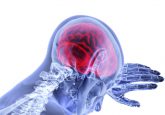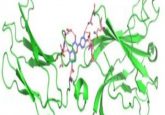Does the Wim Hof Method really work?

A systematic review of the impact of cold therapy and breath techniques involved in the Wim Hof Method has indicated that the practice has anti-inflammatory effects.
Having come to the recent realization that I have exhausted the pools of people to whom I can extol the benefits of my weekly cold-water swim, I was delighted this week to come across a systematic review of studies evaluating the impact of the teachings of Wim Hof: The Iceman. Finally! A valid reason to bring my cold water preaching into my trade and extend my parish to the 100,000+ members and regular readers of BioTechiques.
Revered among enthusiasts of getting really chilly and holding a position akin to Roger Deakin’s in the wild swimming community (a linked – but certainly distinct – group), Wim Hof has emerged as a leading prophet for the benefits of all things cold. His series of principles, based on the three pillars of breathing, cold therapy and commitment, with which, he claims, you can improve your physical and mental wellbeing have increasingly been taken up by people around the world, and are widely known as the Wim Hof Method.
But, crucially, does it work? This question has been posed several times, but the answers have so far come in the form of small-scale studies with sample sizes too small to draw definitive results from. A quick look through the Wim Hof Method’s website yields claims that it can result in “an augmented immune system… the build-up of brown adipose tissue… reduced inflammation… balanced hormone levels” and more; clearly, statements that should be put to the test.
Making use of these existing studies to provide further insights into the effect of the method, Omar Almahayni and Lucy Hammond of the University of Warwick (UK), conducted a systemic review of nine papers comprising eight individual trials published between 2014 and 2022, which investigated the impacts of the Wim Hof method. Three of the trials only evaluated the breathwork component of the method and its impact on exercise performance. The study followed the PRISMA guidelines for systematic reviews.
 Radiotracer illuminates fructose metabolism
Radiotracer illuminates fructose metabolism
A radiotracer that can detect fructose metabolism could pave the way for the earlier detection of multiple conditions.
They found a consistent trend throughout the studies, an increase in the release of the stress response hormone epinephrine, which in turn leads to the increase in the anti-inflammatory cytokine IL-10 and decreases in levels of pro-inflammatory cytokines TNF-ɑ, IL-6 and IL-8. This indicates that the method could well reduce inflammation. The impact on participants’ performance during exercise, measures with readouts such as frequency of breath, was less consistent; some studies showed a positive impact while others reported no statistically significant improvement.
The team highlighted that there were high concerns of bias in seven of the eight studies, as it is seemingly impossible to blind the participants and researchers from which intervention, the method or the control, is being administered. Once someone has hiked up a snowy mountain bare-chested and taken cold showers for a week, as was administered in several studies, it’s difficult to convince them that they are not in the trial group.
While this systematic review provides stronger evidence that the Wim Hoff Method can indeed improve aspects of physiology, particularly in relation to inflammation, Almahayni and Hammond note that a larger scale, more rigorous investigation is required to comprehensively support this conclusion.





